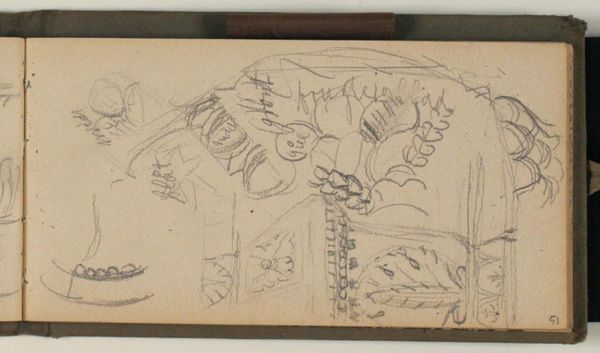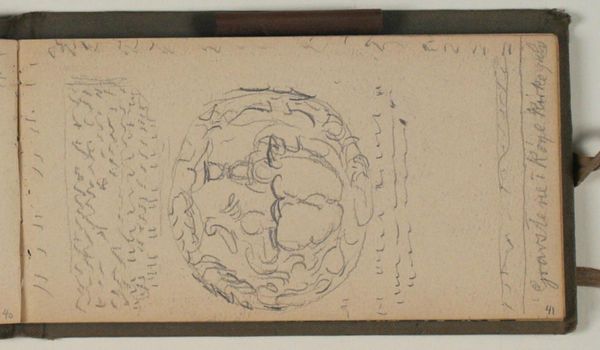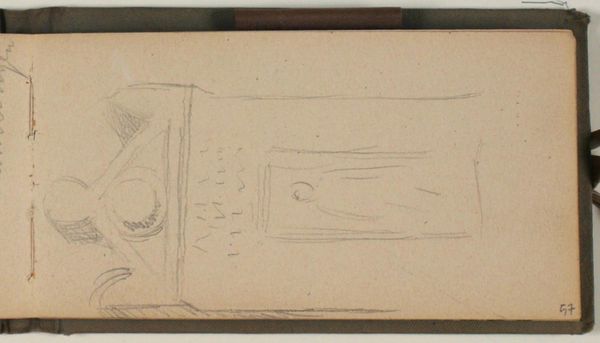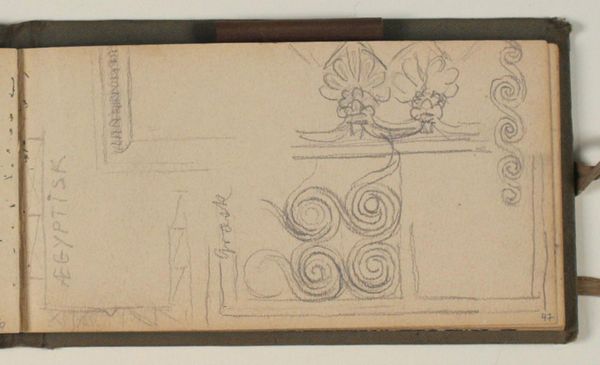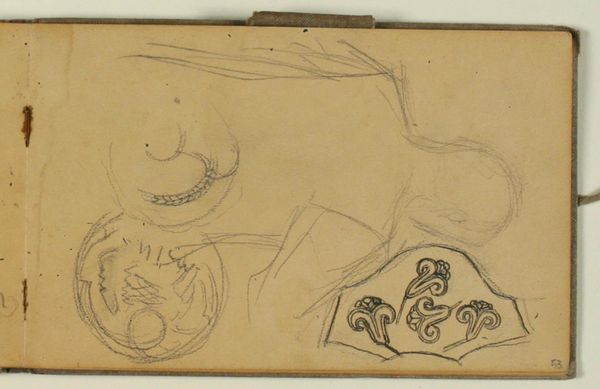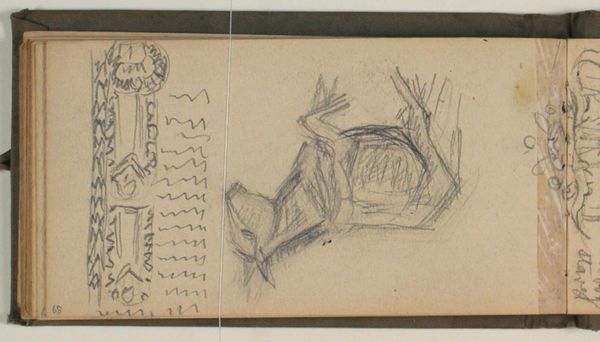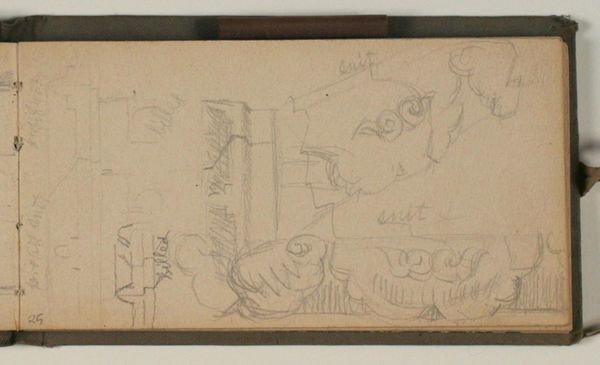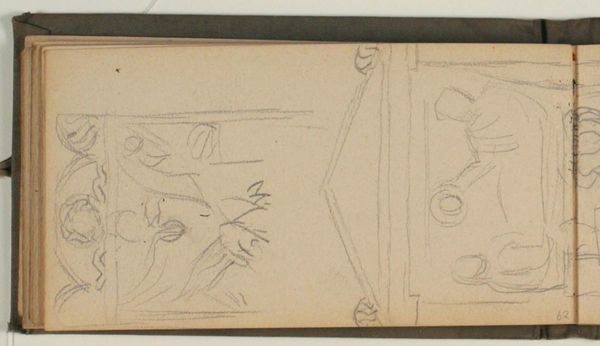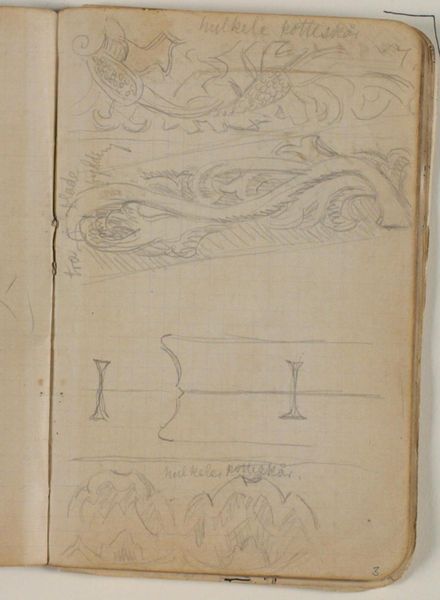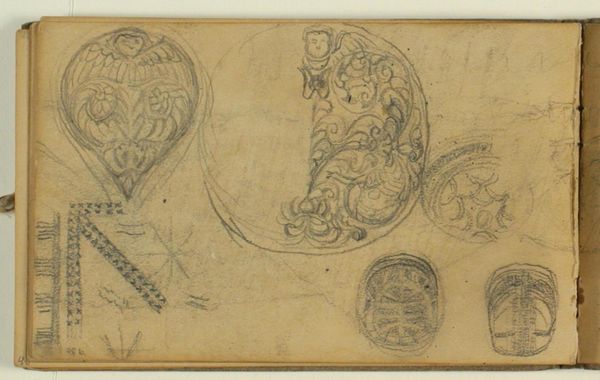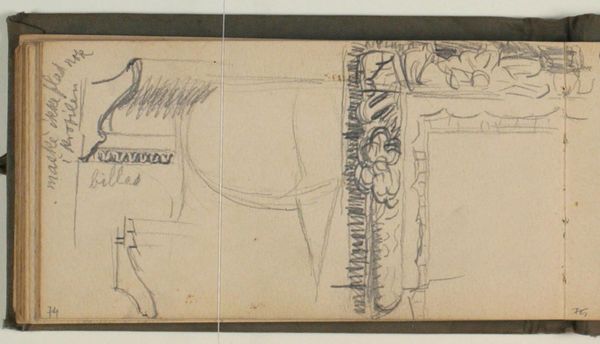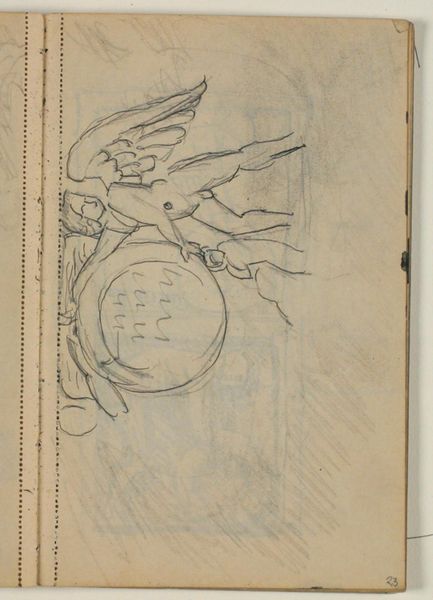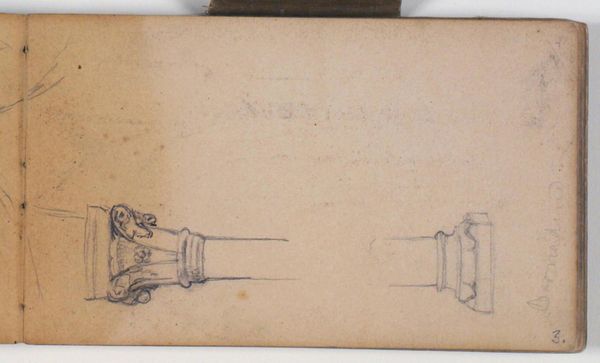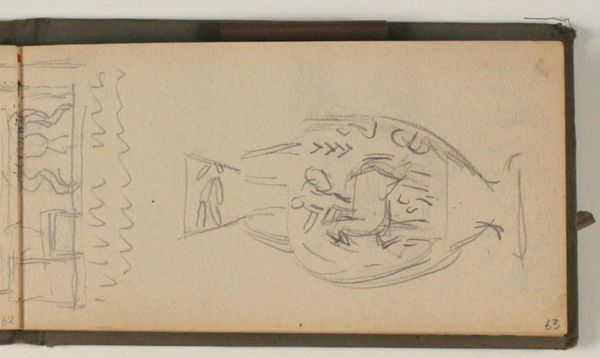
drawing, pencil
#
drawing
#
form
#
sketch
#
pencil
Dimensions: 92 mm (height) x 174 mm (width) (bladmaal)
Curator: Here we have Niels Larsen Stevns' "Studies of Epitaph Frames and Cartouches," dating back to 1919, part of the collection at the Statens Museum for Kunst. Editor: Immediately, what strikes me is the raw energy of these pencil lines. You can almost feel the artist's hand moving quickly, capturing these shapes before they fade. It feels almost urgent. Curator: It's a window into the artistic process, certainly. These aren’t finished works but rather studies. Stevns, working during a period of intense social change in Denmark, was deeply interested in the function of art within public spaces. Epitaphs and cartouches were prominent features of churches and monuments, communicating very public messages. Editor: Right, so it's fascinating to consider what these sketches might say about craft and labour. He's focusing on the frame, the structure. The epitaph frame itself isn’t just decoration; it’s integral to presenting that public message and, obviously, crafted by someone. Were these preparatory for something more elaborate? Curator: It's likely so. The artistry involved in crafting these memorials reflected specific societal beliefs about remembrance. So these forms had a real cultural power beyond their material value. Think about who commissioned them, who benefited, and what the public were meant to glean from the final result. Editor: You know, considering Stevns' choice of pencil…it underscores that materiality in interesting ways. It's so direct, no layers between the artist's hand and the page. It reminds us that all monumental works begin with humble materials, with labor and choices about production. Curator: Exactly! It humanizes these otherwise imposing memorial markers. Understanding the historical context deepens our engagement with them. These frames aren't simply aesthetic. They underscore power dynamics within a given social context. Editor: So, it’s about more than just what these frames literally show; it's about who made them and for what public. Thanks to your insights I will think about them in the streets as signifiers with much labor, meaning, and context packed into them. Curator: Precisely! Examining the sketch with an appreciation for the history gives it a greater relevance even to this day. It reflects not just the individual artist’s work, but the labor of so many hands along with those cultural meanings from its day.
Comments
No comments
Be the first to comment and join the conversation on the ultimate creative platform.
